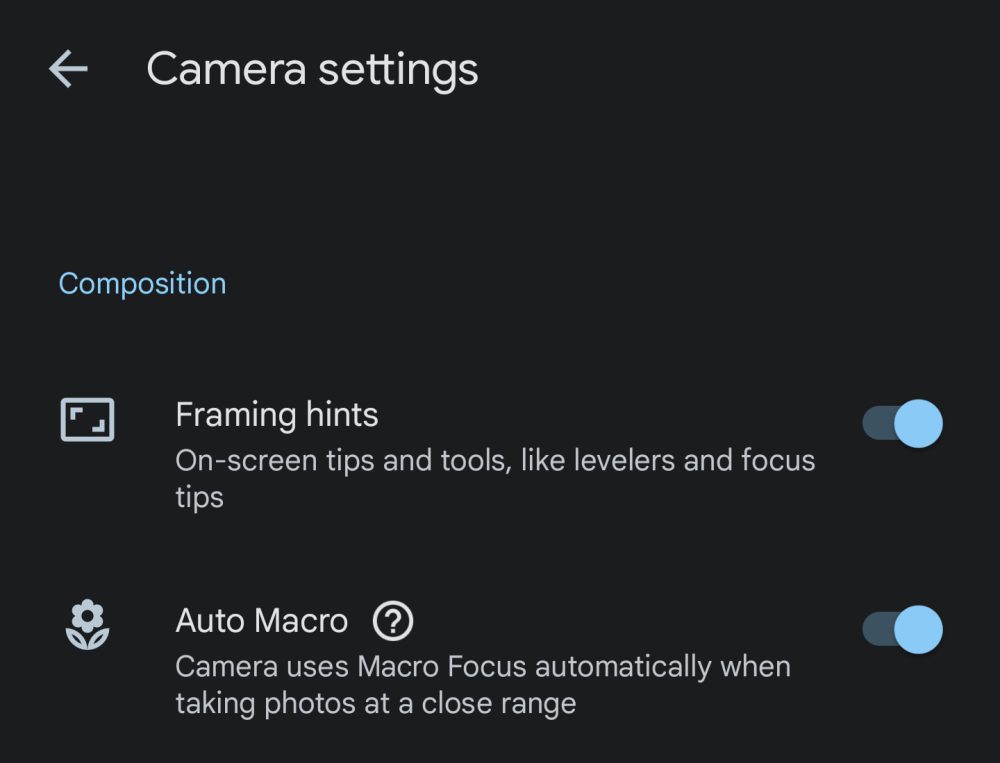The Pixel 7 Pro launched with version 8.7.165 of Google Camera, and 8.7.250 is now rolling out with the addition of Macro Focus settings but also with the removal of the double-tap action gesture.
At launch (on version 8.7.165), Google turned on Auto Macro so that “Camera uses Macro Focus automatically when taking photos at a close range.” It appeared in Settings under Composition and was enabled by default. In our experience, entering 2x zoom could also trigger Macro Focus.
When your Pixel 7 Pro got close enough to a subject, it would automatically switch lenses to allow for macro shots. A yellow flower icon would appear with a tap letting you turn Macro Focus off temporarily.

Google Camera 8.7.250 now removes the toggle from Settings and instead elevates it to the dropdown menu that appears when swiping down on the viewfinder or tapping the top-left control pill.
Appearing alongside More light (flash), Top Shot, Timer, and Ratio, Macro Focus is set to “Auto.” “Off” disables the feature and a “Macro is off” message will appear at the top of your screen when you get close to something. A white flower icon that features a slash will also show up, and tapping it will switch you back to Auto.
“On” will keep Macro Focus enabled — by switching lenses immediately — all the time and you get a “Macro is locked” message. As such, the Pixel 7 Pro now has a traditional macro “mode.”
1: Auto | 2 & 3: Off | 4: On
Meanwhile, this latest version of Camera 8.7 removes the Double-tap action. This gesture let you zoom (1x to 2x and vice versa) or switch between the rear and front-facing cameras. Google removed this option starting with the Pixel 5 and 4a 5G — continuing with the Pixel 6 series — and its initial inclusion on the Pixel 7/Pro was mostly likely a mistake.
Author: Abner Li
Source: 9TO5Google









